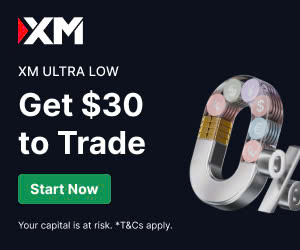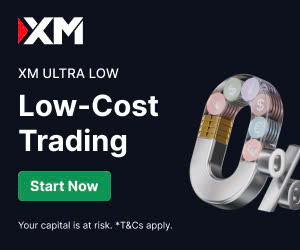
10 minute read
XM vs XTB: A Comprehensive Comparison
The world of forex and CFD trading is vast, and choosing the right broker can make or break your trading journey. Two prominent names in the industry, XM vs XTB, consistently stand out for their robust offerings, user-friendly platforms, and global reach. But which one is the better fit for your trading needs? In this comprehensive comparison, we’ll dive deep into the key aspects of XM vs XTB, including their platforms, fees, regulations, trading instruments, and more, to help you make an informed decision.
Whether you’re a beginner looking for an accessible platform or an experienced trader seeking low-cost trading, this guide will break down everything you need to know about these two brokers in 2025.

💥 Trade with XM now: Open An Account or Visit Brokers 🏆
Overview of XM vs XTB
Before we dive into the specifics, let’s get a quick snapshot of both brokers.
XM: A Global Leader in Forex and CFD Trading
Founded in 2009 and headquartered in Cyprus, XM has grown into one of the most trusted names in online trading. With over 10 million clients across 190 countries, XM is known for its beginner-friendly approach, tight spreads, and a wide range of trading instruments. The broker is regulated by multiple authorities, including CySEC, ASIC, and DFSA, ensuring a high level of trust and security.
XTB: A European Powerhouse with a Proprietary Platform
Established in 2002 in Poland, XTB is one of the largest publicly traded forex and CFD brokers in the world. With offices in 13 countries and regulation from top-tier bodies like the FCA and KNF, XTB appeals to traders who value transparency and a robust proprietary trading platform, xStation 5. XTB serves over 500,000 clients globally and offers a diverse portfolio of over 6,100 instruments.
Both brokers cater to traders of all experience levels, but their strengths and weaknesses differ. Let’s compare them across critical factors.
Regulation and Safety: Which Broker Is More Secure?
When choosing a broker, safety is paramount. Both XM vs XTB are well-regulated, but their regulatory frameworks differ slightly.
XM’s Regulatory Framework
XM operates under multiple regulatory bodies, including:
· Cyprus Securities and Exchange Commission (CySEC): Ensures compliance with EU regulations.
· Australian Securities and Investments Commission (ASIC): A top-tier regulator known for strict oversight.
· Dubai Financial Services Authority (DFSA): Provides regulation for Middle Eastern operations.
· Financial Services Commission (FSC): Oversees operations in Belize.
XM also offers negative balance protection and segregates client funds in tier-1 banks, reducing the risk of financial loss due to broker insolvency. However, some traders note that the FSC in Belize is less stringent compared to ASIC or CySEC.
XTB’s Regulatory Oversight
XTB boasts an impressive regulatory portfolio, including:
· Financial Conduct Authority (FCA): One of the most reputable regulators globally, offering high investor protection.
· Polish Financial Supervision Authority (KNF): Ensures compliance in XTB’s home country.
· Cyprus Securities and Exchange Commission (CySEC): Aligns with EU standards.
· International Financial Services Commission (IFSC): Covers global operations.
XTB’s FCA regulation gives it a slight edge, as the FCA offers a compensation scheme of up to £85,000 for UK clients in case of broker insolvency. Like XM, XTB segregates client funds and provides negative balance protection.
Verdict: Both brokers are highly secure, but XTB’s FCA regulation and broader top-tier oversight give it a marginal advantage in terms of investor protection.
Trading Platforms: MetaTrader vs xStation
The trading platform is your gateway to the markets, so it’s crucial to choose one that suits your trading style.
XM’s Trading Platforms
XM is a MetaTrader-focused broker, offering:
· MetaTrader 4 (MT4): A classic platform known for its reliability, advanced charting, and support for automated trading via Expert Advisors (EAs).
· MetaTrader 5 (MT5): An upgraded version with more timeframes, advanced order types, and support for additional asset classes.
· XM WebTrader: A browser-based platform that mirrors MT4’s functionality without requiring downloads.
XM’s platforms are highly customizable and support one-click trading, trailing stops, and pending orders. They’re ideal for traders who prefer the familiar MetaTrader ecosystem and want access to a wide range of technical indicators.
XTB’s Trading Platforms
XTB offers two platforms:
· xStation 5: XTB’s proprietary platform, praised for its intuitive design, fast execution, and advanced features like heatmaps, sentiment analysis, and a built-in economic calendar. It’s available on desktop, web, and mobile.
· MetaTrader 4 (MT4): XTB also supports MT4 for traders who prefer this industry-standard platform.
xStation 5 stands out for its user-friendly interface and award-winning design, making it a favorite among beginners and intermediate traders. However, it lacks the extensive third-party plugin support that MetaTrader offers.
Verdict: If you value MetaTrader’s versatility and EA support, XM is the better choice. For a modern, beginner-friendly platform, XTB’s xStation 5 takes the lead.
Fees and Spreads: Which Broker Offers Better Value?
Trading costs can significantly affect your profitability, so let’s compare the fees and spreads of XM vs XTB.
XM’s Fee Structure
XM offers three main account types:
· Micro Account: Designed for beginners, with a minimum deposit of $5 and spreads starting from 1 pip.
· Standard Account: Similar to the Micro Account but with larger contract sizes, spreads from 1 pip.
· XM Zero Account: A low-spread account with spreads from 0.0 pips and a $3.5 commission per lot.
XM’s spreads are competitive, especially on the Zero Account, where EUR/USD averages 0.1 pips with the commission included. However, spreads on Standard and Micro Accounts are slightly higher than the industry average. XM does not charge deposit or withdrawal fees but imposes a $5 monthly inactivity fee after 90 days of inactivity.
XTB’s Fee Structure
XTB offers a single Standard Account with two variations:
· Standard Account (Spread-based): Spreads start from 0.35 pips for EUR/USD, with no commission.
· Pro Account (Raw Spread): Spreads from 0.1 pips with a $4 commission per lot.
XTB’s spreads are generally lower than XM’s, especially for the Standard Account, making it more cost-effective for active traders. XTB does not charge deposit or withdrawal fees but applies a $10 monthly inactivity fee after 12 months of inactivity.
Verdict: XTB wins for lower spreads and a more favorable fee structure, particularly for Standard Account holders. XM’s Zero Account is competitive but comes with a commission that may offset savings for some traders.
Trading Instruments: Diversity of Markets
The range of instruments a broker offers can impact your ability to diversify your portfolio.
XM’s Trading Instruments
XM provides access to over 1,000 instruments, including:
· Forex: 57 currency pairs, including majors, minors, and exotics.
· Commodities: Gold, silver, oil, and soft commodities like cocoa and wheat.
· Indices: Major global indices like the S&P 500, FTSE 100, and Nikkei 225.
· Stocks: CFDs on over 1,000 global stocks.
· Cryptocurrencies: Bitcoin, Ethereum, and other major cryptos.
· Thematic Indices: Unique offerings like AI and electric vehicle indices.
XM’s diverse portfolio makes it ideal for traders looking to explore multiple asset classes, especially cryptocurrencies and thematic indices.
XTB’s Trading Instruments
XTB offers an even broader range, with over 6,100 instruments:
· Forex: 49 currency pairs, slightly fewer than XM.
· Commodities: Metals, energies, and agricultural products like coffee and sugar.
· Indices: A wide range of global indices.
· Stocks and ETFs: Over 7,800 real stocks and 150 ETFs, a standout feature.
· Cryptocurrencies: CFDs on major cryptos like Bitcoin and Ethereum.
· CFDs: Over 4,500 CFDs on stocks, indices, and commodities.
XTB’s extensive stock and ETF offerings make it a top choice for traders interested in equity markets and long-term investments.
Verdict: XTB offers a wider range of instruments, particularly in stocks and ETFs. XM is better for traders interested in cryptocurrencies and thematic indices.

💥 Trade with XM now: Open An Account or Visit Brokers 🏆
Account Types and Minimum Deposits
The accessibility of account types and minimum deposits is crucial, especially for beginners.
XM’s Account Types
XM offers four account types:
· Micro Account: $5 minimum deposit, ideal for beginners.
· Standard Account: $5 minimum deposit, suited for most traders.
· XM Zero Account: $5 minimum deposit, designed for low-spread trading.
· Shares Account: $10,000 minimum deposit, for trading real shares.
XM’s low minimum deposit of $5 makes it highly accessible for new traders.
XTB’s Account Types
XTB keeps it simple with one account type:
· Standard Account: $0 minimum deposit (though some regions may require $100-$250).
· Pro Account: Available for professional traders with higher capital requirements.
XTB’s zero minimum deposit is a major advantage for beginners, though regional variations may apply.
Verdict: XTB’s $0 minimum deposit is more beginner-friendly, but XM’s variety of account types caters to different trading styles.
Educational Resources and Customer Support
Both brokers prioritize trader education and support, but their approaches differ.
XM’s Educational Offerings
XM excels in educational content, offering:
· Webinars: Live sessions in 23 languages, covering beginner to advanced topics.
· Video Tutorials: In-depth guides on trading strategies and platform usage.
· Articles and E-books: Comprehensive resources on forex, technical analysis, and risk management.
· Demo Account: Unlimited virtual funds for practice.
XM’s educational materials are particularly strong for beginners, with a focus on accessibility and multilingual support.
XTB’s Educational Resources
XTB also offers robust educational tools:
· Trading Academy: A structured course for beginners, intermediates, and experts.
· Webinars and Videos: Covering market analysis, trading psychology, and platform tutorials.
· Articles: In-depth guides on trading strategies and market trends.
· Demo Account: Practice with virtual funds.
XTB’s Trading Academy is well-organized and beginner-friendly, with a slight edge in structured learning.
Customer Support
· XM: 24/5 support via live chat, email, and phone in over 30 languages. Response times are fast, and support is highly rated.
· XTB: 24/5 support via live chat, email, and phone. XTB also offers dedicated account managers for professional clients, a feature XM lacks.
Verdict: XM has a slight edge in multilingual support, but XTB’s dedicated account managers and structured Trading Academy make it a strong contender for education and support.
Pros and Cons of XM vs XTB
XM Pros
· Low minimum deposit ($5).
· Wide range of account types.
· MetaTrader 4 and 5 support.
· Strong educational resources for beginners.
· Unique thematic indices and crypto trading.
XM Cons
· Higher spreads on Standard Accounts.
· Inactivity fee after 90 days.
· Limited proprietary platform options.
XTB Pros
· Zero minimum deposit (in some regions).
· Low spreads and competitive fees.
· Award-winning xStation 5 platform.
· Extensive range of stocks and ETFs.
· FCA regulation for added security.
XTB Cons
· Fewer currency pairs than XM.
· Inactivity fee after 12 months.
· Limited account type variety.
Which Broker Should You Choose?
The choice between XM vs XTB depends on your trading goals and preferences:
· Choose XM if you’re a beginner or prefer MetaTrader platforms, low minimum deposits, and a wide range of educational resources. XM is also ideal for traders interested in cryptocurrencies and thematic indices.
· Choose XTB if you prioritize low spreads, a user-friendly proprietary platform (xStation 5), and access to a vast range of stocks and ETFs. XTB is better for traders seeking FCA regulation and a structured learning experience.
Both brokers are reputable, secure, and cater to traders worldwide. To make the best decision, consider opening a demo account with each to test their platforms and features firsthand.
Conclusion
In the XM vs XTB showdown, there’s no clear winner—it all boils down to what you value most in a broker. XM shines with its beginner-friendly approach, MetaTrader platforms, and diverse account types, while XTB stands out for its low-cost trading, proprietary xStation 5 platform, and extensive stock offerings. By weighing factors like fees, platforms, and instrument variety, you can choose the broker that aligns with your trading style.
💥 Note: To enjoy the benefits of the partner code, such as trading fee rebates, you need to register with XM through this link: Open An Account or Visit Brokers 🏆
Read more:




